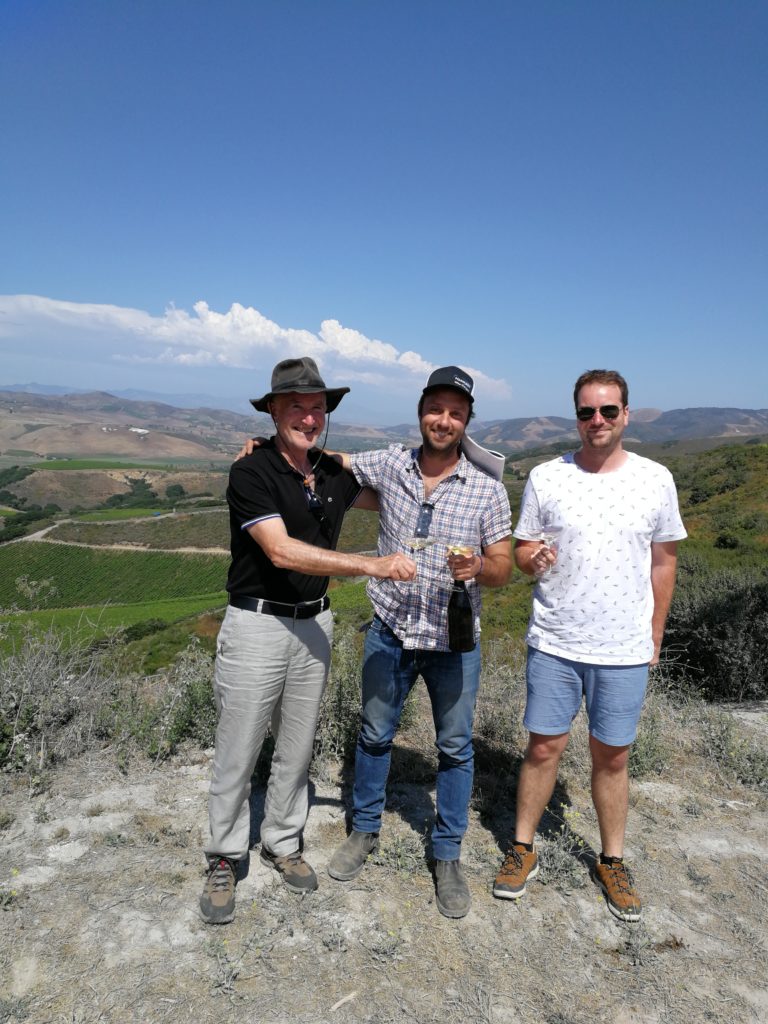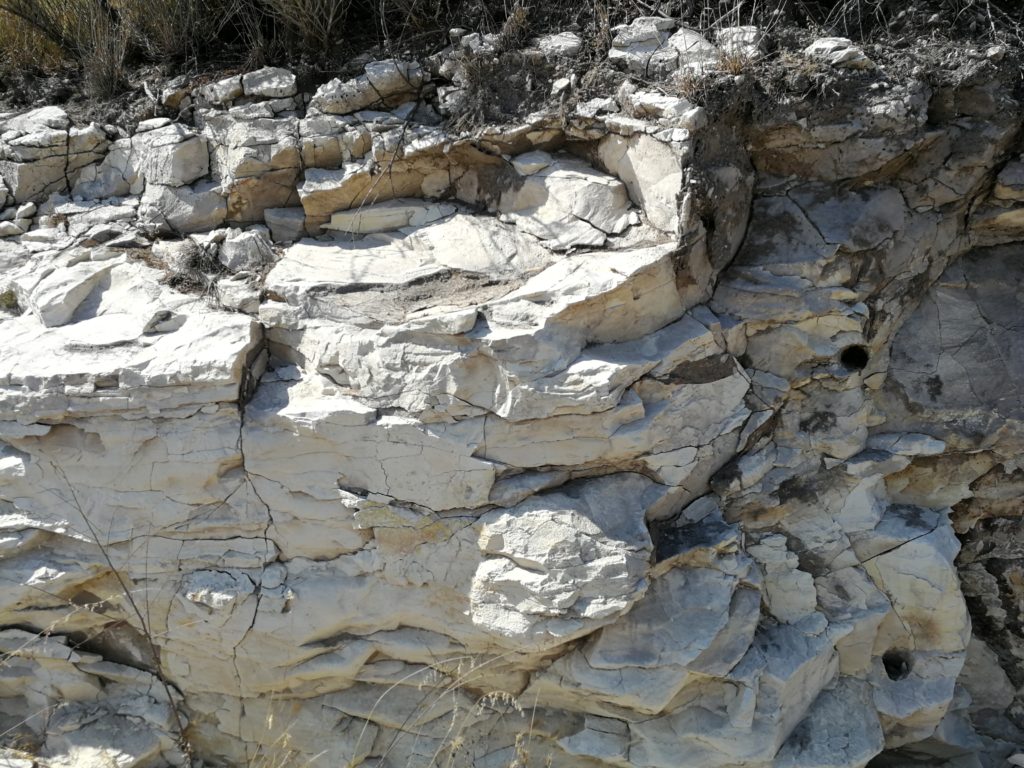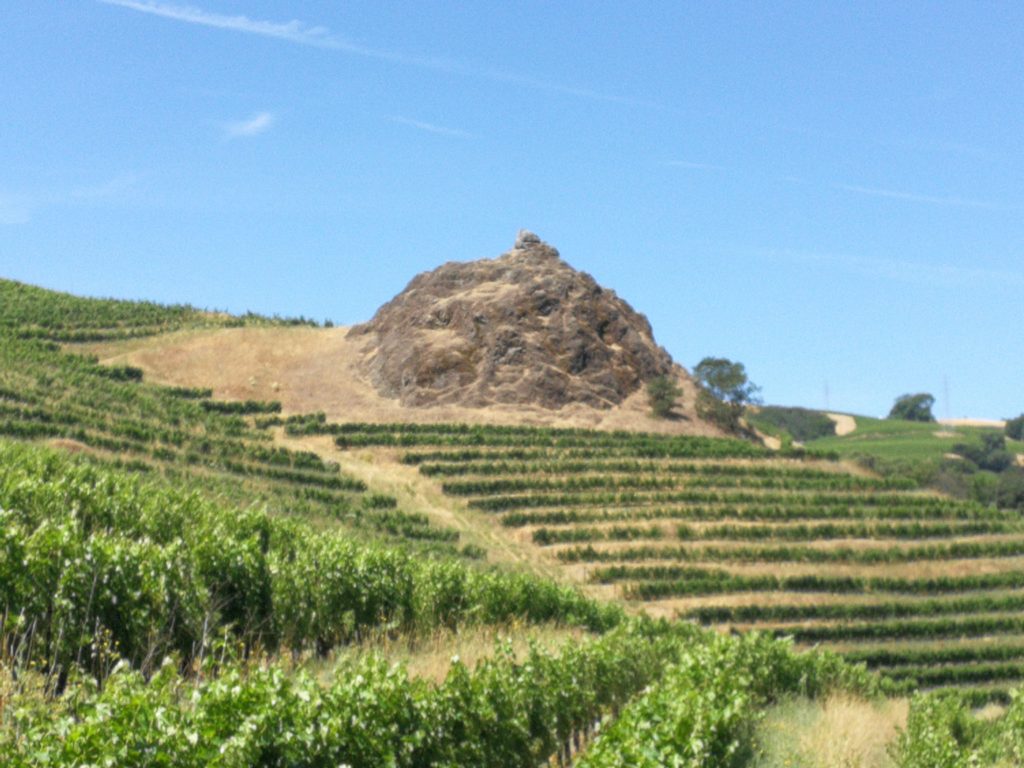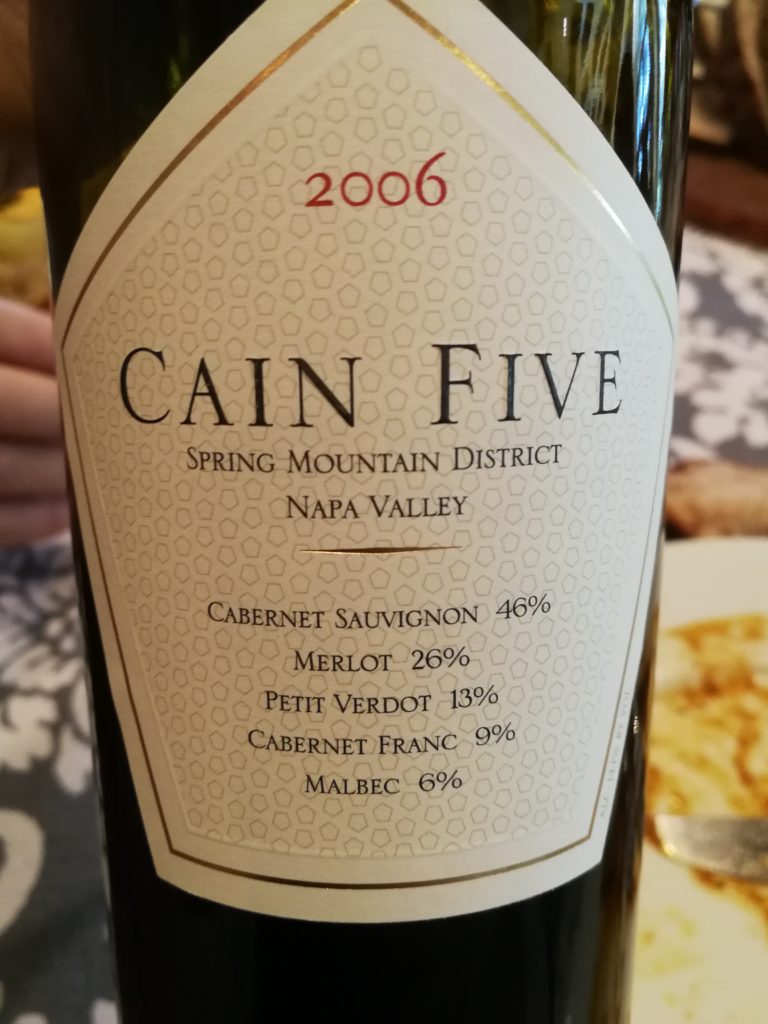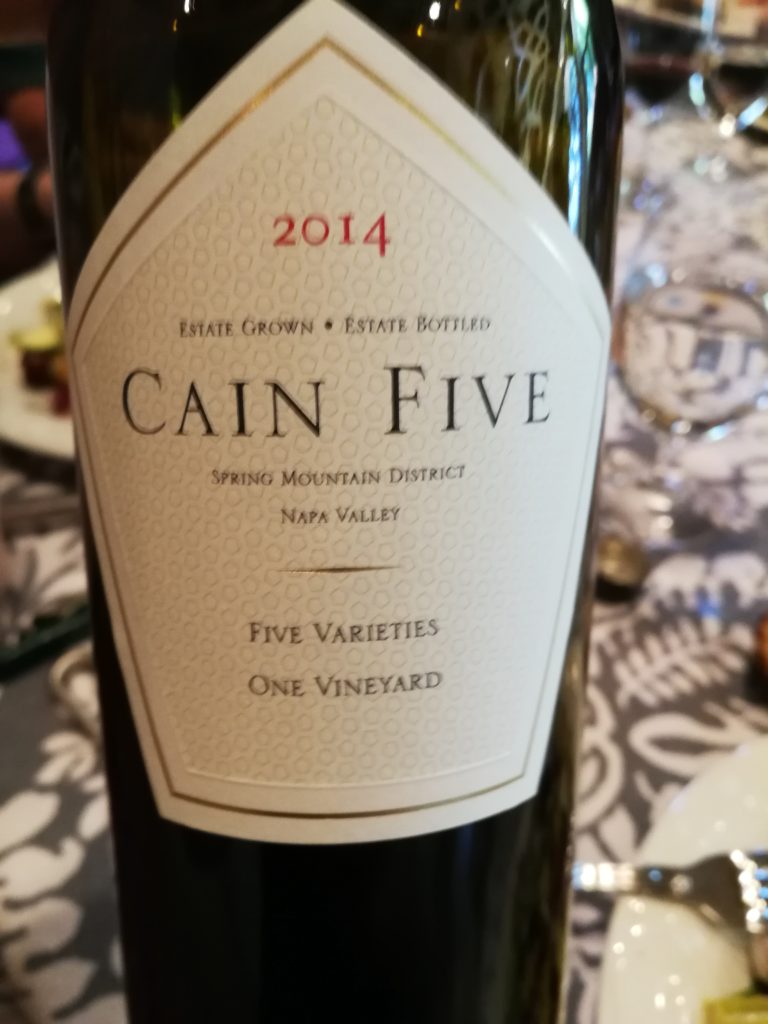
Par Jacky Rigaux et Charles Rigaux
[1] Taber (G.M.), Le Jugement de Paris, éd française, Gutenberg, 2008.
Bottle Shock, film.
California wines have entered the fine wine category with the brand as a flag bearer. During the famous “Jugement de Paris de 1976” [1] which marked their entry on the media scene, it was Château Montelena (chardonnay) and Stag’s Leap Wine Cellars (cabernet-sauvignon) that beat Meursault Charmes and Château Mouton-Rothschid (Pauillac), and not the places where grapes were born, such as Chambertin or Romanée [2] A first visit to California in 1988, with Didier Dagueneau, winegrower in Pouilly-sur-Loire and Philippe Engel, winegrower in Vosne-Romanée, allowed me to meet Mel Knox who organized our tour on the recommendations of Jean François, the Burgundian cooper, and Becky Wasserman who introduced the elite of small Burgundian estates to the Americans. Mel marketed the François Frères and Taransaud barrels. He was therefore introduced to the best Californian “wineries” and took us to the thirty or so best “winemakers” of the moment: Josh Jensen (Calera), Zelma Long (Simi), Dick Graff (Chalone), David Ramey (Matanzas Creek), Richard Ward (Saintsbury), Williams Seylem… As he welcomed me to honour our first visit, he said with his beautiful American accent: “Bonjour Jacky. Jean (François) m’a dit que tu étais le chantre du terroir, le poète des climats de Bourgogne. Le terroir, oui, mais sans doute guère pour plus de 10 % dans l’élaboration du vin. Ici tu vas rencontrer des « winemakers » ! “And we toured the great wine-growing regions, Carneros, Napa Valley, Sonoma, Santa Cruz, as well as Santa Barbara, where Jim Clendenen was a pioneer and initiated one of the first adventures “à la bourguignonne” by creating “Au Bon Climat“. Everywhere we were received royally. However, no one offered to visit the vineyard, but a good part of the time was devoted to discovering the “wineries” whose shiny equipment and high technology impressed us, followed by a tasting of all the wines, in tasting rooms that we had not imagined, with about ten beautiful glasses in front of us, more if the number of wines on offer required it! In those days, we still tasted with the “mustard jar” in Pouilly and with the “cognac” type balloon glass in the Burgundy cellars, next to the barrels. A cultural shock, a new world of wine, an unsuspected high technology in wine making! In Simi, for example, we were impressed when we learned that a plane had just arrived with a shipment of grapes ready to be vinified… However, we were able to meet some winemakers of the artisanal type, such as Burt Williams (Williams Selyem), Josh Jensen (Calera), Steve Kistler and Tony Soter (Etude), who were committed to an interest in the place, and of course Jim Clendenen. The interest for the place could well exist in these lands where anything was allowed to make wine, but it was only a very small sketch!
[2] There are American Viticultural Area (AVA), wine-growing areas with specific geographical characteristics. These “AVAs” exist in almost all American states. Only one American state does not have vineyards! An “AVA” refers to a geographical area, without mention of grape varieties, yields, cultivation methods or vinification. In California, the most famous “AVAs” are: Stags Leap District, Oakville, Rutherford, Spring Mountain District, Sonoma Coast, Santa Cruz Mountains, Santa Ynez Valley…
The idea of terroir is essential in California
Ten years later, in 1997, the same Mel Knox welcomed me to a royal picnic in the middle of nature as Americans know how to do, in Armstrong Woods, a bottle in hand, shouting: “Jacky, il n’y a que les imbéciles qui ne changent pas d’avis ! “And to proudly show me a bottle stamped: “Designated Vineyards“, from a plot he had bought with Jim Clendenen and Jean François! In the meantime, I had met Ted Lemon [3] who had come to study in France and who had stayed to learn about working in the vineyard and to work, in 1982, at the Guy Roulot estate in Meursault. The latter had just passed away, at a time when Jean-Marc, his son, preferred the profession of actor to that of winegrower! Intelligent, cultivated, sensitive, friendly, passionate, eager to learn, Ted was chaperoned by Aubert de Villaine, Georges Roumier, Jacques Seysse (Domaine Dujac) and Hubert de Montille. We couldn’t have hoped for better guides! Back in the USA, he left the East Coast where he was born to work at Château Woltner in Napa. In 1993, he founded his own business, Littorai, first by renting a winery, before creating his own biodynamic farm in 2003, in Sebastopol, Sonoma. By the end of the 1980s, he had anticipated the great wine-growing potential of the Pacific coast of Sonoma. Untiringly, in ownership or tenancy, he identified what he likes to call “terres nobles”, for a bio-dynamic viticulture of place. These carefully identified and understood “Hauts-lieux” can be far from each other. One of them, for example, even causes him some problems with the bears that inhabit the area, but as a convinced ecologist he accepts the local fauna and flora! All the wines are vinified in carefully identified places and proudly display their names to deliver with goldsmith precision the message of their native land: Mays Canyon, Hirsch, Savoy, The Haven, One Acre… It saddens him to think of the Côtes d’or that he loves so much, covered exclusively with vines, without concern for biodiversity. He is happy to see that things are moving on the mountain of Corton and appreciates the work of a Bruno Clavelier, from Vosne-Romanée, who is trying to safeguard the territory of the two species of bats on the heights of the vineyard, who come to enjoy the insects that attack the vines, at different times !
Another figure in the Californian “terroirist” adventure, is Chris Howell, who leads Cain on the heights of Saint Helena, between Napa and Sonoma. Didier Dagueneau first told me about it in the 1990s. Having come to the “Rencontres Henri Jayer” in 1999, which brings together about forty winegrowers each year, he forged a beautiful warm relationship with the master of the terroirs with whom he loved to travel through the vines while listening to him. Each plot is identified, harvested at the right time, vinified separately, to give a wine with a well-soaked identity, an authentic terroir wine, a “haut-lieu” wine. Cain Five is undoubtedly one of the most accomplished terroir wines in California today, with a beautiful clear colour, a flexible consistency, a liveliness that is always marked and a length that allows the palatability to develop with grace and obvious digestibility, far from all these Californian wines too heady and tiring from the second glass!
While the movement towards interest in wines that deliver the message of their birthplace is still weak in California, it is now firmly in orbit among those in the mouvment can be counted some of the best winemakers of the moment, led by Ted Lemon, Chris Howell and Jim Clendenenen. In America, as in Europe, the tension between wines produced by building a taste and those that express the message of the place is high. Is fine wine a craft or industrial product? Does it seek to be as close as possible to what nature can give, or is it the pure product of imagination and human technology? Make no mistake, it is not only the “winemakers” of the New World who produce technological wines. « Il existe des vedettes du vin technologique dans les appellations les plus réputées de France, mais qui se voilent, enrobées de la bénédiction et de la réputation de leurs terroirs. Les vins « fabriqués » reflètent le monde d’aujourd’hui. Une civilisation qui hurle génère des vins qui hurlent ! »[5]
[3] La terre noble, in Le terroir et le vigneron, Terre en Vues, 2006 (pp. 285-293) et Vin de fabrication et vin de terre, in Le climat, le vigneron et le gourmet, Terre en Vues, 2019 (pp. 139-140)
[4] Naissance des nouveaux terroirs californiens, in Le terroir et le vigneron, Terre en Vues, 2006 (pp. 277-284).
[5] Ted Lemon. This sentence echoes that of Jean-Michel Deiss, who reminds us that too many wines today, even in historical vineyards, « expriment plus le cri du cépage que le murmure du terroir ».
Some beautiful wines of places tasted in July 2019
Alongside the winegrowers who have put the wines of Californian places into orbit, today in their sixties or even eighties, a generation of thirty-year-olds is emerging, often initiated or dubbed by their elders. Rather than magnify the cry of the grape variety, they try to let us appreciate the murmur of the terroir!
- RUDD ESTATE, 2015
It was Chris Howell who asked me to invite Frederick Ammons to the “Rencontres Henri Jayer“, just as he was taking over the direction of Rudd. We are in Oakville, in the heart of the Napa Valley, and the vineyard spreads out in one piece, like a Burgundian enclosure without the walls, at the end of a vast cone of dejection, therefore rich in colluvium descended from the mountain, colluvium of volcanic origin here. Like the Clos de Tart, from which he drew inspiration, he isolated several different parcels, each harvested and vinified separately, tasting the grapes, in the Dom Denise way [6] to ensure their phenolic and not only technological maturity (acidity, tannins…). Rudd’s revival began 25 years ago with David Ramey, Charles Thomas then Patrick Sullivan, and continues with the owner’s daughter, Samanta Rudd, who tastes very well and accepts that Frederick Ammons is not looking to get 100 points from Robert Parker, but that he is working to enhance the terroir! About fifteen people are at the service of a vineyard of about twenty hectares, in biodynamic since 2016, with in particular the compost of Maria Thun. Fermentations are spontaneous, with the local yeasts. The wines thus gain in originality to assert a strong character and generate a real palatability, an obvious mineral dimension. The first wine is called Rudd. It is the result of the best that the place has to offer every year. It is one of the most sought-after wines of the moment, with its very close neighbours, Harlan and Screaming Eagle, hence its high price, around 250 dollars, its two neighbours being around 750 dollars. There is a second wine, Samanta, which sells for around 175 dollars and a third Cross Road at 80 dollars.
Its first vintage, 2015, is still a little too Californian, but with a great texture, an obvious consistency, a liveliness that shows its nose and a great length. It already shows the exquisite finesse of the place that can be discovered by tasting it in the barrel in its 2017 version.
[6] The reading of Dom Denise, a Cistercian monk to whom we owe Les vignes et les vins de Bourgogne, written in 1779, is always inspiring (réédition Terre en Vues, 2006, p. 37)
- THE HILT
I met Matt Dees in 2017, thanks to Armand Magret who had been introduced to me by my friend Jean-Charles de La Morinière, who had just sold Bonneau du Martay to the American Stan Kroenke. I had the opportunity to make a first tour in the vineyards in July 2017 which impressed me. With The Hilt, we are in a mountain vineyard, planted on steep slopes, in a high wine-growing area called Salsipuedes, very close to the Pacific. The famous Burgundian consultant Bernard Hervet, like the no less famous winegrower, Etienne de Montille, consider that it is in this region that the best American wines will be made with the Chardonnay and Pinot grape varieties! In the heart of the great wine-growing region called Santa Rita Hills, a few top wine-growing places are emerging, where perhaps tomorrow the greatest wines from North America’s terroirs will be made!
The soils are siliceous, with a little limestone, and there is a lot of wind. The sunshine is permanent, the cold too, “comme le rayon de soleil dans un frigo ! ». Yves Hérody came in the spring of 2019 to help Matt understand how the soil works and confirmed that we are dealing with a great wine-growing terroir.
The Hilt « Bentrok », 2017
Tasted at the foot of the vine, The Hilt “Bentrok” 2017 drew the eye with its beautiful, clear, brilliant ruby colour. The attack was clear, precise, the vivacity obvious, far from the sweetness that characterizes many American wines from the very beginning. The silky texture unfolded delicately and the long finish was very palatable. In feedback we had floral notes and sensations reminiscent of the green skin of lemon, a sign of great tension and asserted minerality.
The Hilt « Radian », 2017
We are in a place where diatomaceous rock dominates. The vine is the world’s largest quarry for extracting this highly sought-after rock powder. The roots are happy in such a place. This very cracked rock, of incredible lightness, is undoubtedly for something in the exquisite delicacy of the finish. The wine is nevertheless very impressive at mid-mouth, to finish very subtle. The texture is very racy, on velvet. The colour is even more assertive, but is also delicately delivered to the eye. Radian expresses itself with a little more vivacity, viscosity and minerality than Bentrok. The demonstration that it is wise to clearly distinguish the two places, rather than offer the amateur a round blend cuvée! From the 2018 vintage onwards, five local wines will be on offer. The lessons of the Henri Jayer Meetings confirm Matt’s commitment to the logic of the Burgundian “climats“!
The tasting of the 2018 vintage in the barrel confirms the originality of the 8 plots carefully identified by Matt Dees. Radian asserts its great potential with a great velvety tactile sensation at mid-mouth, a beautiful salivation on the finish and an exquisite touch of white pepper that happily coexists with floral evocations. Bentrok confirms its silky touch and retained power on a very tight and delicate screen.
- JONATA
The Jonata vineyard was founded in 1999 on the very sandy site of a cattle ranch. It is also led by Matt Dees. We planted a little bit of everything, in the American style, as was done about thirty years ago with all the fine grape varieties of old Europe: Cabernet Sauvignon, Petit Syrah, Sangiovese… No pinot and chardonnay because these varieties have not given anything conclusive. Thanks to the influence of the ocean, every spring is cool. As the soils do not retain water, the skins of the grapes are always thick.
80 acres are devoted to vines in Jonata, others welcome 150 sheep and goats. There is also a backyard. Olive trees and fruit trees grow there and all a natural biodiversity is respected. New vine plantations with Greek grape varieties allow to experiment a viticulture without irrigation. No pesticides, no herbicides, we are close to organic viticulture, and Matt is thinking of putting it into biodynamic viticulture soon.
- GRGICH HILLS ESTATE
Miljenko Grgich, born in 1923, from Croatia, founded the company, which today has five entities: 80 hectares in one piece in American Canyon, 60 hectares in Carneros, 30 hectares in Yountvill, a few hectares in Rutheford, as well as in Calistoga, where he started as winemaker at Château Montelena… and won first place in the « Judgement of Paris in 1976 ».
Today, it is a nephew, Ivo Jeramaz, Mike Grgich’s nephew, who manages the estates and works, in particular, to develop American Canyon, 80 hectares in one piece, into biodynamic viticulture. He has enlisted the help of a French consultant who has made a great reputation for himself in California, Philippe Coderey, who came from Cuers, near Toulon, where his family owns a vineyard. We are in a cool place, no more than 27° at the height of summer, at the beginning of Napa Valley when we come from San Francisco. Only green manures are applied after the harvest. Everything is harvested by hand, with 25 experienced Mexican pickers.
Grgich, Sauvignon, Essence, 2017 et 2013
The Sauvignon grape variety has always fascinated the Grgich family, and Ivo perpetuates this tradition for a tonic 2017 version, which enters the mouth with a beautiful vivacity to develop on a good texture that ends on the sweetness at the end of the mouth. The 2013 vintage offers a more consistent palate, with a more mineral finish, proof that the wine ages well.
Grgich, Chardonnay, Carneros, 2016 et 2014
The wine comes from a vine with beautiful clays of a depth of nearly one meter. No malolactic fermentation for the wines made from this grape variety to preserve maximum freshness. It is more of a “vin de place” than a grape variety wine, which expresses itself more at the end of the mouth, on spicy sensations, than in the middle of the mouth a little too sweet, a little too much “American” style. The consistency is more pronounced in 2014 than in 2016.
Grgich, Cabernet Sauvignon, Yountville, Vieilles vignes, 2013et 1995
This wine comes from the best terroir of Yountville, which borders the vineyards of Dominus overlooking it, founded by Christian Mouex. The colour is very clear, brilliant and deep. The attack is rather nervous, to give way to a beautiful consistency that unfolds delicately on a velvety texture. A real “vin de place”! With the 1995 vintage, confirmation that we are in a true “vin de lieu”, capable of benefiting from ageing to reveal its personality.

David Ramey, Jacky Rigaux, Mel Knox and Chris Howell
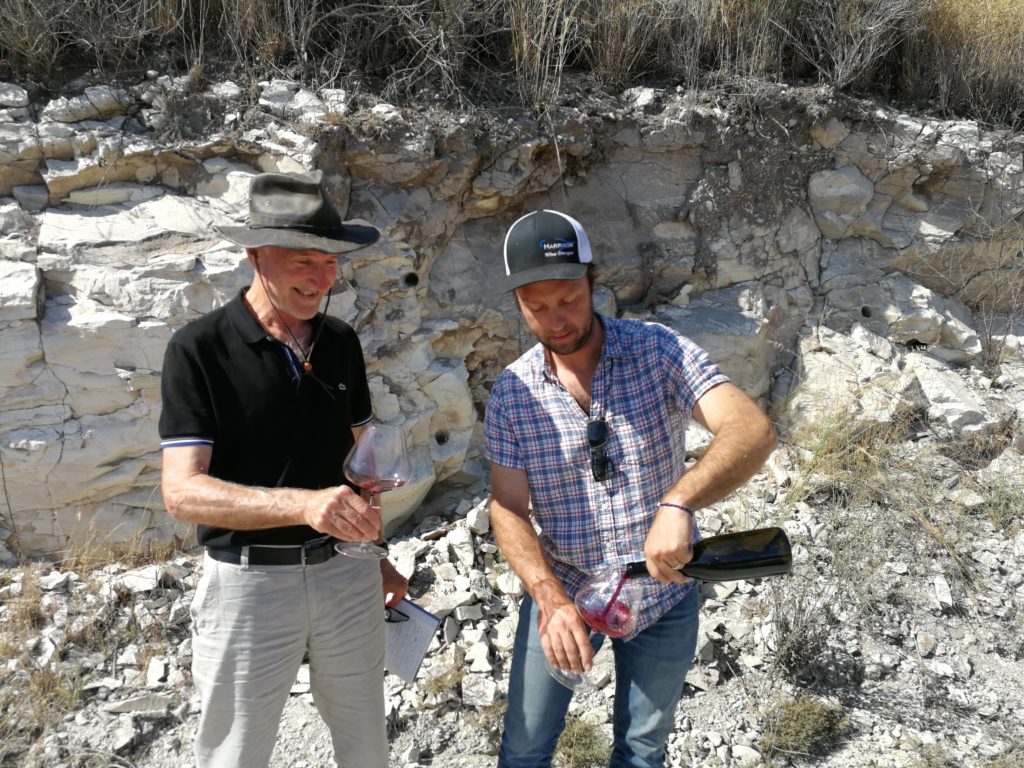
Matt Dees and I are tasting The Hilt 2017 in front of the mother rock
